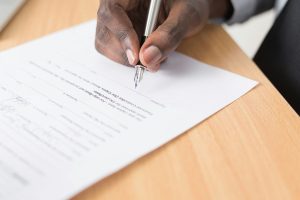Exporting fashion goods to France can be a lucrative venture, but it also comes with the risk of non-payment. Recovering payments for these goods requires a structured approach, and understanding the process is crucial for success. The recovery system typically involves three phases, each with specific actions aimed at recovering the company’s funds. From immediate actions post-account placement to potential litigation, the process is designed to maximize the likelihood of recovery while considering the costs involved. This article outlines the key steps to take when faced with the challenge of recovering payments for fashion goods exported to France.
Key Takeaways
- A 3-phase Recovery System is employed, starting with immediate contact attempts, followed by legal demands, and potentially culminating in litigation.
- Within 24 hours of account placement, comprehensive debtor investigation and persistent contact attempts are initiated to secure payment.
- Engaging local legal support includes drafting demand letters and maintaining persistent legal communication to pressure the debtor.
- Deciding on litigation requires evaluating the viability of recovery and understanding the costs, which range from $600 to $700 for upfront legal fees.
- Collection rates and fees vary depending on the age of the account, the number of claims, and whether the account has been placed with an attorney, with rates up to 50% of the amount collected.
Initiating the Recovery Process
Immediate Actions Post-Account Placement
Upon account placement, immediate action is crucial for the recovery of fashion goods exported to France. The first 24 hours are pivotal, with a multi-channel communication strategy kicking into gear. A series of four letters is dispatched, and skip-tracing commences to gather essential financial and contact information.
Daily contact attempts are made through phone, email, text, and fax, persisting for 30 to 60 days. This relentless pursuit is the foundation of our recovery system, designed to maximize the potential for successful collection.
If these efforts do not yield a resolution, the case escalates to the next phase, involving legal action. The transition is seamless, with an affiliated attorney within the debtor’s jurisdiction taking over without delay. The table below outlines the initial recovery process:
| Phase | Action | Duration |
|---|---|---|
| One | Multi-channel communication and debtor investigation | First 24 hours |
| One | Daily contact attempts | 30 to 60 days |
| Two | Case forwarded to affiliated attorney | Immediate upon failure |
Understanding the recovery system and its phases is essential for exporters to France. It’s a structured approach that leverages tailored collection rates and persistent efforts to ensure maximum recovery.
Comprehensive Debtor Investigation
Upon initiating the recovery process, a comprehensive debtor investigation is crucial. This phase involves meticulous scrutiny of the debtor’s financial status and asset tracing, ensuring a clear picture of the debtor’s ability to pay. The investigation is a multi-faceted approach:
- Skip-tracing to locate the debtor and ascertain the most current contact information.
- Analysis of the debtor’s financial health and asset ownership.
- Evaluation of the debtor’s payment history and creditworthiness.
The goal is to determine the feasibility of recovery and to strategize the most effective approach for payment retrieval.
This thorough investigation is pivotal in the recovery system, guiding subsequent actions and informing the decision on whether to proceed with legal measures or close the case. It is a tailored process, adapting to the unique circumstances of each delinquent account in the context of luxury brand exports to France.
Persistent Contact Attempts and Escalation
When initial contact attempts fail, our three-phase Recovery System kicks into high gear. Daily attempts to reach debtors are made through various channels, ensuring no stone is left unturned. Persistence is key; our collectors employ phone calls, emails, text messages, and faxes to secure a resolution.
If the debtor remains unresponsive, escalation is inevitable. The case is swiftly forwarded to an affiliated attorney within the debtor’s jurisdiction, marking the transition to a more formal approach.
The table below outlines the frequency of contact attempts made during the first phase:
| Day Range | Contact Attempts |
|---|---|
| 1-15 | Daily |
| 16-30 | Every 2 days |
| 31-60 | Twice a week |
Should these efforts prove fruitless, we proceed to the next phase, providing a clear recommendation based on a comprehensive assessment of the debtor’s financial status and the likelihood of recovery.
Engaging Local Legal Support
Drafting Demand Letters by Attorneys
Once the initial contact attempts have failed to yield results, the case escalates to a more formal level of communication. Attorneys draft demand letters, a critical step in the recovery process. These letters serve as an official notice to the debtor, clearly stating the outstanding debt and the consequences of non-payment. The tone is firm yet professional, ensuring the debtor understands the seriousness of the situation.
Persistence is key in legal communication. A series of letters may be sent, each progressively asserting the urgency and legal implications of the unresolved debt. This methodical approach aims to prompt a response from the debtor before further legal action is considered.
The goal is to achieve a resolution without resorting to litigation, which can be costly and time-consuming.
Should the debtor remain unresponsive, the attorney’s assessment will guide the next steps. Whether it’s closing the case due to low recovery prospects or proceeding with litigation, the decision is informed by a comprehensive evaluation of the debtor’s assets and the facts of the case.
Persistent Legal Communication
Once the initial demand letters have been dispatched, our affiliated attorneys maintain a regime of persistent legal communication. This involves a series of structured follow-ups to ensure the debtor is constantly reminded of their obligations. The process is designed to apply pressure and encourage settlement before escalating to litigation.
- The first follow-up typically occurs within a week of the initial demand.
- Subsequent communications are strategically timed to maximize impact.
- All interactions are meticulously documented to support potential legal proceedings.
The goal is to secure payment through persistent, professional legal channels, minimizing the need for court intervention.
Our approach is informed by a comprehensive guide on managing delinquent accounts in luxury brand exports to France, navigating trade laws, debt collection regulations, and recovery efforts. Should these efforts not yield the desired results, we are prepared to assess the situation and recommend the most appropriate course of action.
Assessment and Recommendation for Further Action
Upon completing a meticulous review, our team will present a clear path forward. If prospects of recovery are dim, we advise case closure, incurring no fees. Conversely, should litigation seem viable, a pivotal decision awaits you.
- Option 1: Discontinue legal pursuit, withdraw the claim, and owe nothing.
- Option 2: Persist with standard collection efforts.
- Option 3: Advance to litigation, covering upfront costs averaging $600-$700.
Should litigation commence, we file for the full amount owed, including filing costs. A failed litigation results in case closure with no additional fees.
Rate transparency is key. Our fees are contingent on collection success, with percentages scaling based on claim age, value, and volume. For instance, accounts under a year old are subject to a 30% fee, while those over a year or under $1000 incur higher rates. Engaging an attorney? Expect a 50% fee on collected amounts.
Deciding on Litigation and Understanding Costs
Evaluating the Viability of Recovery
Determining the likelihood of successful recovery is a pivotal step. If the debtor’s assets and case facts suggest low recovery chances, we advise case closure with no fees owed. Conversely, if litigation appears promising, you face a critical decision.
- Immediate case closure recommendation with no fees if recovery is unlikely.
- Option to withdraw or continue standard collection if litigation is not pursued.
- Upfront legal costs required for litigation, typically $600-$700.
The choice to litigate is significant, entailing upfront costs and the potential for further action. Weighing this decision carefully is essential for a positive outcome.
Our competitive collection rates are tailored to the claim volume and age. For instance, accounts under a year old are charged at 30% of the amount collected, while older accounts or those under $1000 incur higher rates. Legal action involves a 50% rate, reflecting the increased effort and resources.
Considering Litigation: Costs and Process
When the path to recovery leads to the courtroom, understanding the financial implications is crucial. Litigation is a significant step, involving upfront legal costs such as court fees and filing charges. These expenses typically range from $600 to $700, depending on the debtor’s location.
Upon deciding to litigate, you’re committing to these initial costs. Our affiliated attorney will then advocate for the recovery of all monies owed, including litigation expenses.
Success in litigation is not guaranteed. If efforts to collect through legal means are unsuccessful, the case will be closed, and you will not owe additional fees to our firm or the attorney. It’s a risk-reward scenario where the potential for full recovery must be weighed against the possibility of bearing the upfront costs without a favorable outcome.
Here’s a quick overview of potential upfront costs:
| Expense Type | Estimated Cost |
|---|---|
| Court Costs | $600 – $700 |
| Filing Fees | Included |
Remember, these are initial investments in the pursuit of justice. The decision to litigate should be made after careful consideration of the case’s merits and the debtor’s ability to pay.
Outcomes of Unsuccessful Litigation Attempts
When litigation fails to recover the owed payments for fashion goods exported to France, the financial implications must be carefully considered. The pursuit of legal action entails upfront costs, which can include court fees and attorney expenses. These costs often range from $600 to $700, depending on the debtor’s jurisdiction.
If the outcome is unfavorable, the case is typically closed with no additional fees owed to the firm or affiliated attorney. However, the initial investment is not recoverable, underscoring the importance of a strategic approach to debt recovery. Litigation costs for French fashion companies can be high. Consider debt recovery rates and outcomes carefully to avoid accumulating legal fees that may outweigh the debt value.
In the event of unsuccessful litigation, companies have the option to revert to standard collection activities, such as calls and emails, or to close the case entirely.
The decision to litigate should be weighed against the potential for recovery and the associated costs. Here is a brief overview of the fee structure for unsuccessful litigation attempts:
- Accounts under 1 year in age: 30% of the amount collected.
- Accounts over 1 year in age: 40% of the amount collected.
- Accounts under $1000.00: 50% of the amount collected.
- Accounts placed with an attorney: 50% of the amount collected.
Understanding Collection Rates and Fees
Rate Structure for Different Claim Categories
Understanding the rate structure for various claim categories is crucial for exporters. Collection rates directly influence recovery strategies, especially when dealing with multiple claims. For instance, the rates for accounts under one year of age differ significantly from those over a year, reflecting the increased difficulty in recovering older debts.
Contingency fees are a common approach, where the fee is a percentage of the amount collected. This percentage varies, encouraging the submission of multiple claims within a short period to benefit from reduced rates. Here’s a simplified breakdown:
-
For 1-9 claims:
- Accounts under 1 year: 30%
- Accounts over 1 year: 40%
- Accounts under $1000: 50%
- Accounts with attorneys: 50%
-
For 10 or more claims:
- Accounts under 1 year: 27%
- Accounts over 1 year: 35%
- Accounts under $1000: 40%
- Accounts with attorneys: 50%
It’s essential to align your recovery approach with the rate structure to optimize the financial outcome.
Cost Implications for Accounts Placed with Attorneys
When accounts are placed with attorneys, the financial dynamics shift. Upfront legal costs become a pivotal factor, often including court costs and filing fees. These can range from $600 to $700, depending on the debtor’s jurisdiction.
Settlements are generally more cost-effective than litigation. It’s crucial to manage these initial expenses effectively to maintain the cost-benefit balance. Negotiating realistic payment plans and offering incentives for early payments can mitigate these costs.
The rate structure for claims placed with attorneys is straightforward: 50% of the amount collected, regardless of the claim’s age or size. This rate underscores the importance of a thorough assessment before proceeding with legal action.
Remember, if litigation attempts fail, you owe nothing further to the firm or the affiliated attorney. This contingency-based approach aligns the interests of all parties involved.
Financial Considerations for Small Claims
When dealing with small claims, particularly those under $1000, it’s crucial to understand collection rates and fees. These claims often incur a higher percentage fee upon recovery, reflecting the increased effort relative to the amount recovered. For instance, accounts under $1000 are subject to a 50% fee of the amount collected, which can significantly impact your net recovery.
Budgeting for legal costs is also essential. Upfront costs for litigation, such as court and filing fees, typically range from $600 to $700. This investment is necessary to initiate legal proceedings, but it’s important to negotiate these terms upfront to avoid surprises.
When securing payments from French partners, always consider the financial implications of the recovery process. Effective financial management includes anticipating potential legal costs and understanding the fee structure of your collection agency.
Here’s a quick overview of the fee structure for small claims:
- Accounts under 1 year in age: 30% of the amount collected.
- Accounts over 1 year in age: 40% of the amount collected.
- Accounts under $1000.00: 50% of the amount collected.
- Accounts placed with an attorney: 50% of the amount collected.
Navigating the complexities of collection rates and fees can be daunting, but with Debt Collectors International, you’re in capable hands. Our seasoned experts are ready to offer tailored solutions that cater to your unique needs, ensuring maximum recovery with minimal hassle. Don’t let unpaid debts disrupt your cash flow. Visit our website now to learn more about our services and take the first step towards securing your finances.
Frequently Asked Questions
What immediate actions are taken once an account is placed for recovery?
Within 24 hours of placing an account, a series of four letters are sent to the debtor, a comprehensive investigation is conducted to obtain financial and contact information, and persistent contact attempts are initiated, including daily attempts for the first 30 to 60 days.
What happens if initial recovery attempts fail?
If all attempts to resolve the account fail during the initial phase, the case is forwarded to one of our affiliated attorneys within the debtor’s jurisdiction for further legal actions, including drafting demand letters and persistent legal communication.
What are the possible recommendations after Phase Two of the recovery process?
The recommendations can either be to close the case if recovery is unlikely, or to proceed with litigation if there is a possibility of recovering the debt.
What costs are involved if litigation is pursued?
If you decide to proceed with legal action, upfront legal costs such as court costs and filing fees are required, typically ranging from $600.00 to $700.00, depending on the debtor’s jurisdiction.
What are the collection rates and fees for your services?
Our collection rates vary depending on the number of claims and their age, with fees ranging from 27% to 50% of the amount collected. Accounts placed with an attorney have a fixed rate of 50% of the amount collected.
What happens if litigation attempts are unsuccessful?
If attempts to collect via litigation fail, the case will be closed, and you will owe nothing to our firm or our affiliated attorney.





